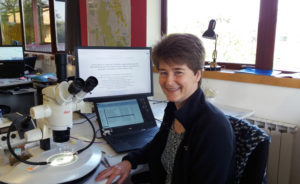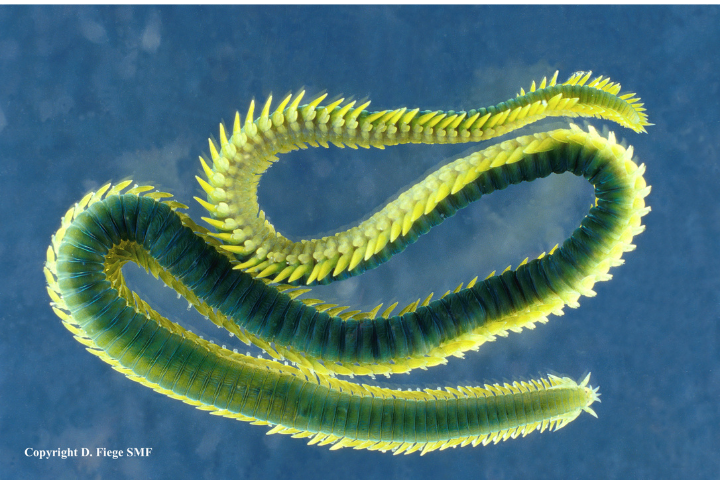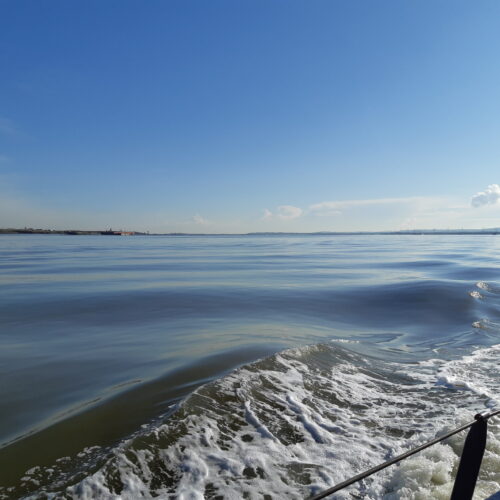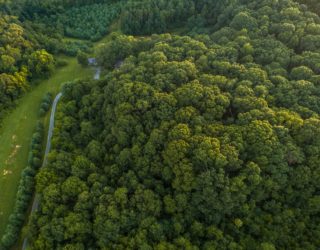Ruth Barnich, Lead Scientist in the marine team at Thomson Environmental Consultants, tells the story behind the discovery of the new polychaete worm species Ampharete oculicirrata Parapar, Moreira & Barnich, 2019.
This worm species ‘with eyes in its head and its bottom’ was found in a marine-protected area on the West Shetland shelf and its discovery was officially announced in June 2019. This is not only the story of the new worm species, but
also of the huge team effort behind it.
It all started with the scientists at the Joint Nature Conservation Committee (JNCC) and Marine Scotland Science, who are responsible for monitoring the designated marine-protected area on the West Shetland shelf. At the end of 2017, they sent a survey team on board the research vessel MRV Scotia to collect samples from the seabed. Once the samples had been collected, they were sent straight from the ship to our laboratory at Thomson’s head office in Surrey. Our team washed the samples to get rid of the formalin, sieved them to extract the larger animals and transferred them to alcohol for further extraction under the microscope.
At this point of the project the analysts proceeded with the usual identification process, however upon checking they could not find a name for the Ampharete specimens in the samples. As the principal scientist, Ruth Barnich verified their identifications and could see that they were clearly belonging to the genus Ampharete, but did not fit any recent species descriptions.
Luckily, she knew that her Spanish colleagues Julio Parapar (University of La Coruna) and Juan Moreira (Autonomous University of Madrid) had recently conducted research on this worm genus. So, after sending them her notes and several specimens, Ruth was very excited when they confirmed her opinion that these animals represented a new species!
With Julio as lead author, the three scientists prepared a description and figures of the new species and agreed on the new name Ampharete oculicirrata, which means Ampharete with “eyes in the cirri” (situated at the posterior end of the animal). A manuscript followed with the formal description of the new species and a discussion of the characteristics, which set it apart from other species in the genus. The designated type specimens were then deposited in several collections – the main type and majority of animals at National Museums Scotland, and additional material at the National Museum of Natural History Spain and the Senckenberg Natural History Museum Frankfurt. This ensures that animals of the new species are available for future comparative studies.
The manuscript was submitted to the European Journal of Taxonomy and reviewed by two anonymous colleagues chosen by the editor. After including their comments the paper was finally published at the beginning of June 2019. The final step to get this new species on the world stage meant gaining official recognition from the International Code for Zoological Nomenclature. The new worm had to be registered with ZooBank, their website, and approved by the responsible editor at WoRMS (World Register for Marine Species), the authoritative database that provides a comprehensive list of all described marine organisms.
Of course, the marketing teams from all institutions involved worked together to launch a joint press release to raise awareness of this exciting new discovery. Press coverage was extensive, and the article was even featured on the BBC Science and Environment landing page. Despite the success behind the discovery of Ampharete oculicirrata, it is not the first species Ruth has discovered and described so far (although it’s certainly enjoyed some of the best media coverage!).












